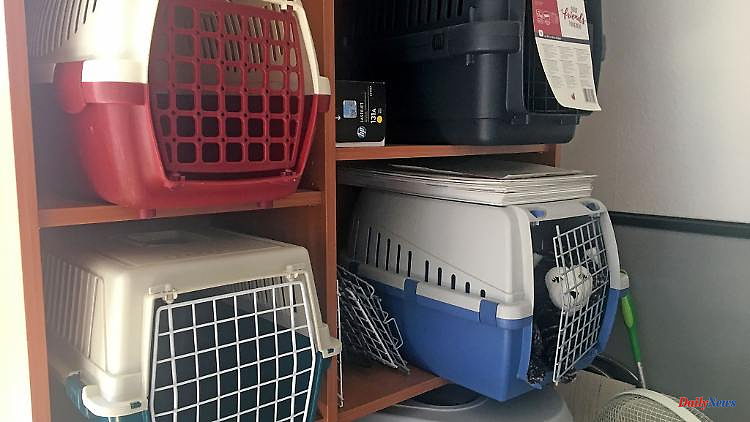Free-ranging cats don't have it easy. Disease and lack of food bother them. Public order offices and animal welfare organizations help. And also the land sits with boat. But how?
Erfurt (dpa/th) - The state of Thuringia has spent around 330,000 euros on the castration of free-living and stray cats in the past two years. This emerges from a response from the Thuringian Ministry of Health to a small request from the AfD member of parliament Nadine Hoffmann. The fact that there is a need is shown by the fact that the funds have been exhausted. According to the ministry, 150,000 euros are again available for castration this year.
Since 2013, according to the Thuringian Animal Welfare Act, the administrative districts and urban districts have been able to impose castration and registration obligations for cats in certain areas. In the independent cities of Erfurt, Weimar, Gera and in parts of the districts of Altenburger Land, Eichsfeld, Gotha and Nordhausen, use has been made of this option. From the ministry's point of view, however, a nationwide regulation is not necessary, "since the problem occurs to varying degrees in different regions". Only where there is a demonstrable problem are regulations required.
How many of these homeless cats live in Thuringia is unclear. The Erfurt Animal Welfare Association assumes that there are around 5,000 stray animals in the state capital of Erfurt alone. The problem: If many "strays" live in one place, the animals often fall ill with leukemia, cat flu, eye and kidney diseases. Or, according to the experts, they are attacked by parasites, injure themselves, suffer trauma or the young animals die early.
"The only thing you can do for them is to control this senseless proliferation. We stand firmly for one," said Petra Dünkler, Chairwoman of Animal Welfare in Erfurt. "We don't want a clean (German: clean, cleaned) city. Not having a cat in Erfurt for once is not the goal, for God's sake." It is about good living conditions for these animals. Cats are neutered under anesthesia and only by professionals.
But castrations cost money. Animal welfare associations, such as the one in Erfurt, can apply for state funding from a resident veterinarian for this procedure. Anyone who sees a stray cat can contact the clubs and give them care there.
Sometimes animals are brought directly to the practice by their finder. But that doesn't happen without a thorough check in advance. A permit is then required. One or the other has already tried to have their animal treated and chipped for free under the guise of a foundling kitten, said Dünkler.
Most cats are released back to where they were found after they have been microchipped and neutered. Because the shelter doesn't keep feral cats. Problem cases, such as wounded cats, often come to Helga König in the south-east of Erfurt. The 81-year-old has been committed to stray cats for decades. She is currently pimping up several "street cats". König affectionately calls her "little mouse" or "my sweetie". But she also worries: "I'm not getting any younger. Who will take care of the animals then?"
"The state government is of the opinion that the cat protection regulations have had a positive effect on animal welfare in the individual areas," writes the ministry. Neutering reduces the susceptibility to infectious diseases in cats without owners. The castration of cats with a house and provider also has an impact on the protection of homeless cats, it said. So these tomcats could "then no longer contribute to the reproduction of homeless cats".
According to the surveys by the animal protection association and the veterinary office of the city of Erfurt, the state of health of the captured animals improved significantly in the period from 2017 to 2019 compared to the period before the ordinance came into force. In 2015 and 2016, just 45 percent of the homeless cats caught were assessed as clinically healthy by the attending veterinarian. After the ordinance came into force, this rate rose from 48 percent (2017) to 58 percent (2018) and 67 percent (2019).












